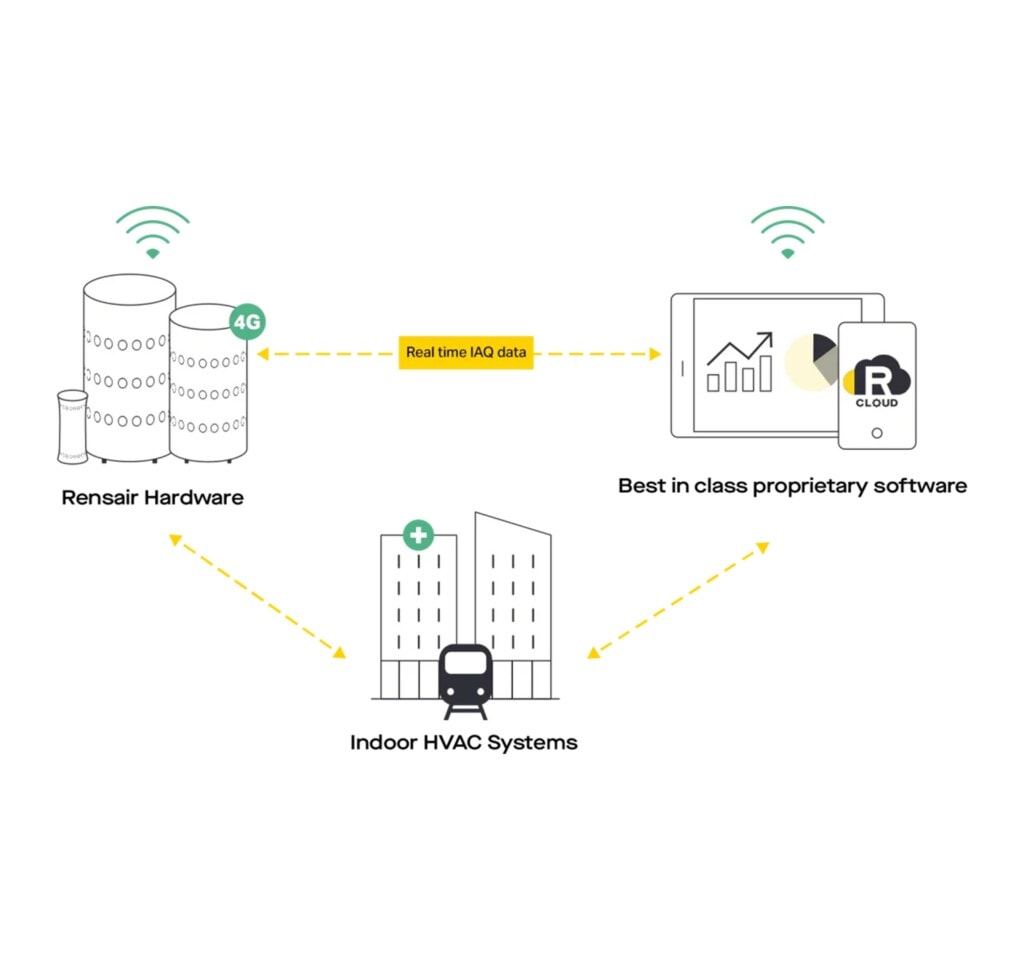Rensair

Problem addressed
To maintain indoor air quality, traditional ventilation systems typically dilute indoor air pollutants with relatively cleaner outdoor air. However, this approach is energy-intensive, as it requires pumping large volumes of outside air into a building, which then must be conditioned for temperature and humidity. Efficiently improving Indoor Air Quality (IAQ) is crucial for maintaining occupant health and well-being. Although replacing existing HVAC systems can address IAQ issues, this solution is often costly, damaging, and disruptive.
Overview of start-up
Rensair’s Smart Demand Controlled Ventilation (SDCV) solution works alongside any building’s HVAC to create an air quality ecosystem that improves indoor air quality, reduces operation energy costs, improves energy efficiency, and in the process can decarbonise a building’s operation by more than 40%. Traditional mechanical ventilation requires a significant amount of energy to condition (heating/cooling/humidity) air while Rensair simply cleans the air already in a room with no conditioning necessary. By partially substituting this mechanical ventilation with a more cost-effective air purification, Rensair can optimise the ventilation mix in a building while consuming 9x less energy per m3 of air when compared to a traditional HVAC system. Rensair’s SDCV can also ventilate strictly according to occupancy rates which reduces their energy use where ventilation is not required. During installation of the SDCV devices, Rensair will optimise the existing HVAC system to adjust the outdoor air intake. This optimisation, alongside the improved energy efficiency of Rensair’s purification devices combine to achieve at least 40% energy savings.
Dirty air enters the unit from all angles at the top of the device before passing through a series of pre-filters and a HEPA filter for purification. The HEPA filters incorporated into Rensair’s products remove 99.97% of pollutants including viruses, bacterial and mould spores, pollen, particulates, smoke, dust, and more. The unit also uses a UVC lamp in combination with the filters to trap particles, pathogens, and gases.
Real time IAQ data from sensors in Rensair’s SDCV units are transferred to an IoT platform Rensair Cloud where users can set thresholds for pollutant levels and can have the devices actively respond when a pollution event occurs.
What makes the start-up innovative?
As a comprehensive solution, Rensair stands out with its patented SDCV solution which can significantly reduce energy consumption, lower costs, and aid in building decarbonisation. Rensair not only monitors and measures IAQ issues, but also addresses them with its award-winning air purification technology.
How the start-up has been designed to scale-up quickly
Rensair’s hardware consists of advanced air purification devices that are portable. These modular solutions can be scaled to any building size and are easily implemented. Additionally, they can connect to an IoT platform Rensair Cloud which can integrate the purification devices with a building’s existing HVAC and BMS, creating a single connected ecosystem for managing air quality.
